Enough with the downer reviews, no?
More and more we’re starting to see Chinese restaurants here that are offering up “real” Chinese food rather than the ubiquitous dumbed down for local palate style that we see not just here, but in much of the west. Places like Caracol de Amor and Old Beijing that have menus only in Chinese, and you either have to figure out your way through them with the help of waitstaff or managers, order from pictures, or, more or less, wing it. Others are more “user friendly”, and have made the effort to translate dishes into Spanish – Jing Yue, Cinco Corderos, Xiao Long Bao, or even the fine dining classic Beijing… if you know to ask them for the menu for Chinese folk.
Xi Bei Feng, Av. Estado de Israel 4499, corner of Jufre [w3w: mess.hobbit.slide], right near to Parque Centenario, got on my radar just because I passed by a couple of times when I was in the neighborhood, prior to their opening. My days off tend to be Monday and Tuesday, when I might be over that way, and they only open for lunch Wednesday through Sunday, though they’re open for dinner every night. Finally, I popped into the place on a recent Sunday and was so impressed that I immediately put it on the roster for the 54th outing of the Roving Ravenous Horde for a Wednesday lunch.
So, the name translates as “northwest wind”. In talking to the owners of the place, it’s for them, a play on words, as they’re from the northwest of China, in Xinjiang, and they were “blown in” to Buenos Aires to live and work, and bring the classic dishes of their region to our streets. I’m not objecting! And, they’ve taken the extra steps to make their menu very amendable to those of us whose Chinese is limited… the menu not only has the Chinese characters, but the transliteration into our alphabet of the name of the dish, plus a Spanish translation, plus a picture. For every dish! Take note Caracol de Amor and Old Beijing… this is how you get local customers.
So, the cuisine of Xinjiang is apparently most noted for lamb and pork dishes, and leaning spicy without going full blown Szechuan or Hunan style. Yangrou shiujiao – lamb dumplings tinged with ginger and sesame are an explosion of flavor. I first ordered them potsticker style, though she returned to say that the chef (I think her husband) highly recommended boiled with these, because of the rich, fattiness of the lamb, he feels when the dumplings are fried, you end up with too much fat, making them feel greasy. He brought them out himself and recommended mixing up a dipping sauce to my own tastes with soy sauce, black vinegar, and chili oil, which are on every table, ready to go.
For the group visit, seven of us, we did a reprise on the above, and a potsticker style order of the pork, prawn, and garlic chive dumplings, jianjiao, were, I think, even better than the lamb ones, though it’d be truly hard to pick. Light, delicate, and complex flavors, with that little crunch on the fried side. Who could ask for anything more?
One of our number, who lived for a couple of years in China, picked out a dish that sounded familiar to him, Suanlatudos, a lightly vinegary salad of shaved potatoes (they look like Ruffles potato chips, but they’re just cut that way and then stir fried) chilled and tossed with red onion and cilantro. Amazingly simple, but wow, I could make that as a snack at home and be very happy. Hey, maybe you could even use Ruffles and elevate them to a whole new level!
Next up, a classic dish of the region, Ziran yangrou, mildly spicy lamb sauteed with cumin. They also offer an entire rack (or half rack) of baby lamb chops spiced much the same way, but then cooked slowly in the oven until falling apart tender (which reminds me of that amazing similar lamb rack at Beirut in San Jose, Costa Rica). I decided against it for this particular lunch, mostly on price (1200 or 800 pesos), though I definitely want to try it some time. This dish really opened up our palates and got everyone primed for what was to come. It’s just damned delicious.
This, believe it or not, is their version of ramen, or lamien, with tender, long, wide noodles piled above a fiery chicken soup. They also have a beef version. Probably the spiciest dish on the table, and not quite enough noodles to go around a group of seven – I think we each got one noodle, but falling off the bone chicken, and tasty as could be. And to be fair, it’s not intended as a dish for seven people.
This was swiftly followed by the Shiuzhu niurou, which was billed as a spicy beef stew. It is spicy, but despite the looks, it’s much lighter on the chilies than the preceding two dishes, and seems to get more of its heat from black pepper, ginger, and garlic. And wow, so good. This one was an unintentional order – I was talking with her about different dishes trying to put together a range of different things, and I think she just added it in thinking I wanted it. We didn’t object, even if it was one dish more than we planned, it was that good.
I had ordered this the first time around, and wanting a bit of vegetable on the table, added it to the group order upfront. It’s one of my favorite non-spicy, and vegetable dishes in Chinese cooking. It’s so simple, but if it’s not done right, it sucks. Kaiyang baicai is basically Chinese cabbage and dried shrimp sauteed with a hint of ginger and garlic, and just the bare splash of soy sauce and vinegar. This is a dish more from the area around Beijing, but shows up on menus in Chinese restaurants that cover a variety of regions, leading me to believe that it’s just one of those practically national dishes.
And, for a few of us who like the more outré dishes, we picked the spicy stir fried small intestines, chinchulines as they’re called here, or chitlins in the southern U.S. Here, Lazi feichang is a stir fry of diagonally cut intestines with bell peppers, onions, and chilies. Not overly spicy, but delicious, and surprisingly tender, and even the one or two folk who normally wouldn’t touch these with a ten foot pole, gave them a try.
So… let’s see. The space – it’s very orange, but it’s comfortable. The two owners, absolutely delightful, and going out of their way to be helpful and make suggestions. The food, really just spectacularly good. Easily as good as Caracol de Amor, which has been my favorite since discovering it a few months back, and far less expensive. Most of the dishes run around 300 pesos, versus 400+ at Caracol. Our group of seven ate all of the above, plus waters and beers, and tip, and left for a grand total of 3780, or 540 pesos apiece, or just over $14. And we could have been supremely happy with one or two fewer dishes, but are even more happy to have tried all these.
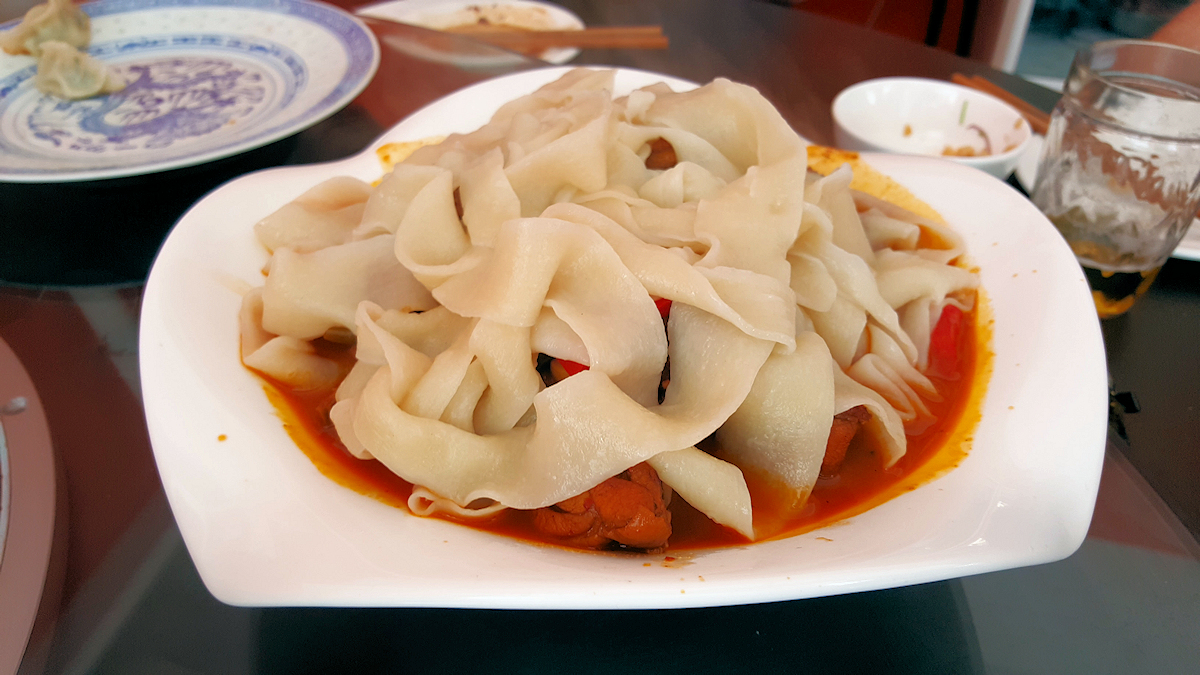
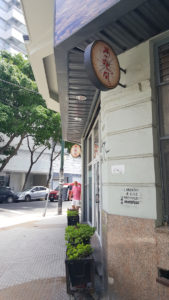


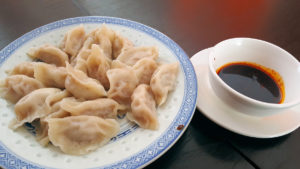


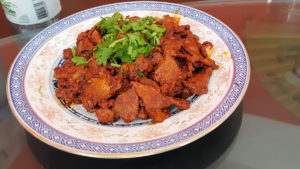

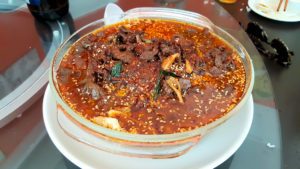
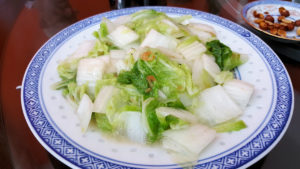

This is a wonderful look into the authentic flavors of Xinjiang cuisine! It’s great to see restaurants embracing true regional dishes and making the experience accessible for everyone.